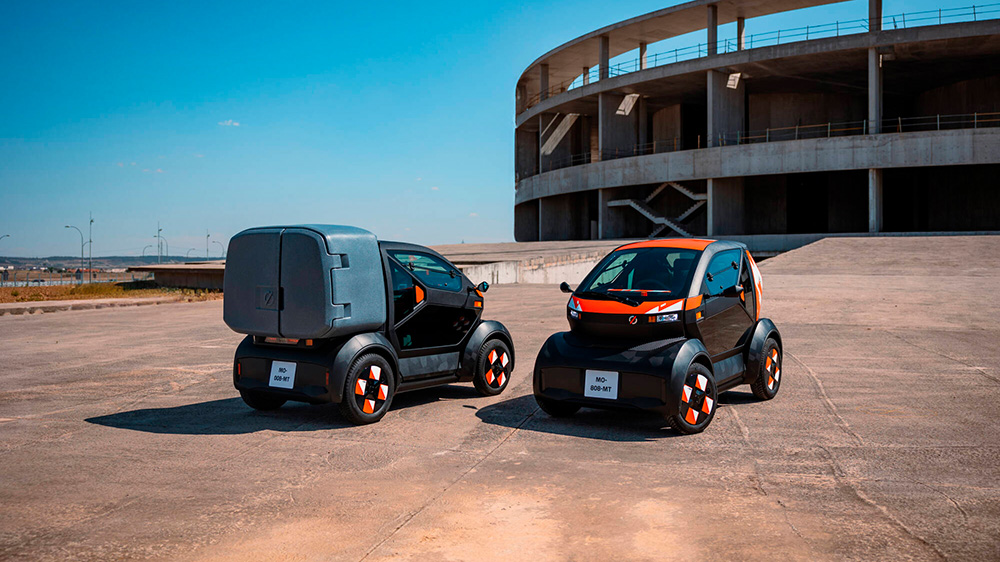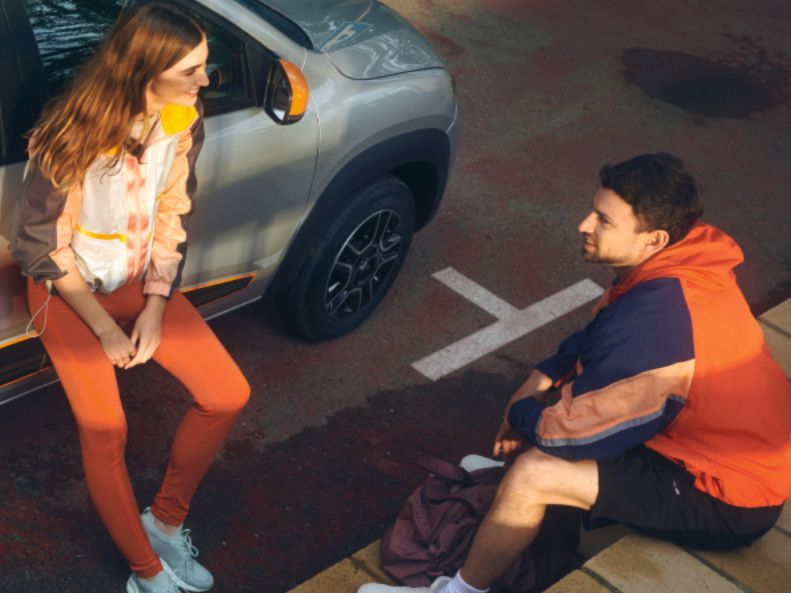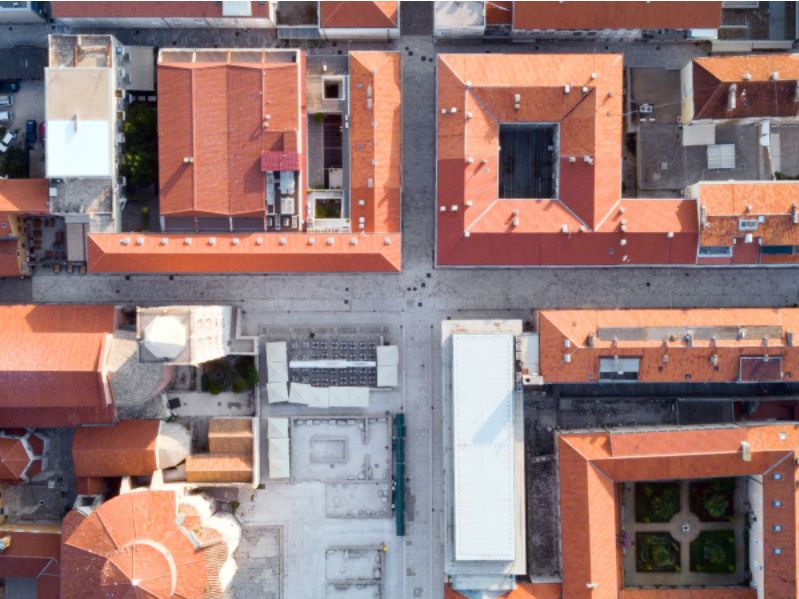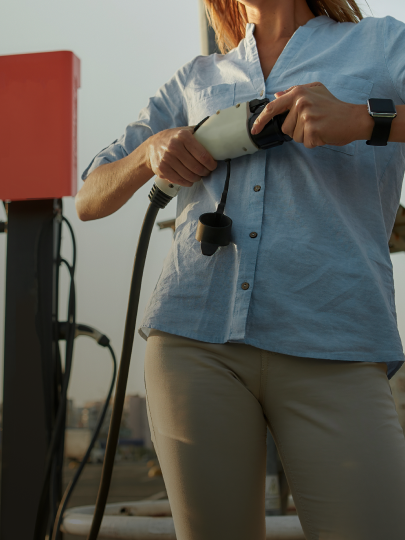In a society faced with the consequences of global warming and increasingly concerned about its impact on the environment, individual cars are becoming the symbol of an outdated era. So do the decision-makers in the various communities that make up the territories chose to respond to these issues? What solutions do they put in place to ensure their inhabitants’ mobility is both sustainable and practical?
Marie Huyghe, Mobility Consultant and membre of the SCOP Odyssée Création, Research engineer at Laboratoire CNRS-CITERES, and Anne-Lise Castel, Mobility Services Deployment Director, take you on a tour of mobility far from the metropolises.
Intervention of Marie Huyghe, Mobility Consultant:
What does mobility look like today in rural or peri-urban areas?
We can characterize this mobility with many things. I’m going to focus on two of them for the moment. First, the question of modal shares, i.e. what percentage of trips are made by car, public transport, etc.. Today in rural areas, we must admit that cars are mainly used, with a modal shares of around 80 or even 90% in certain areas.
So, the car still has a lot of room, and its modal share is not decreasing much. If we look at the various surveys that have been carried out on a national scale, there was one in 2008 and there was another more recently. We can see that the modal share of the car is not changing much, but we should note that, especially since lockdown, there are interesting signals around us. If we look at what is happening with bicycles for instance, and the use of the bicycle for daily commuting and especially for leisure trips, which is clearly increasing in these rural and peri-urban areas.
The modal share is a first indicator. The other point that is interesting to explore is the distances that people in one same household in rural areas travel today. If we look at the average distances and in particular the average distances for commuting, (i.e., going from home to work), we are at distances of around 15-17 kilometers. These are significant distances in terms of distance, time, and cost for households. That’s the first thing.
And we estimate that households travel around 30 kilometers per day. That is important. However, what is interesting to me when we talk about the evolution of uses and more specifically, of the shift towards active modes of transport such as cycling and walking, is to note that today, 40% of rural trips in France are less than 5 kilometers long. And 5 kilometers is considered a distance that can be covered by an electrically assisted bicycle. Not for everyone, of course, not all the time, but in any case, it is a distance that can be done differently than by car. And as I was saying, today, most of these trips are still made by car.
DO THE INHABITANTS WANT TO CHANGE THEIR HABITS?
There are two things. Their reaction: for example, you must look at what is happening at the moment, what is happening since the increase in fuel prices with the war in Ukraine, etc. We can see that more and more residents and employees are telling their elected representatives or employers about their mobility problems. So today, we can no longer consider that the dependence on the automobile observed in these territories and in the practices of households, is satisfactory. We knew that. Today, we have a whole part of the population that is excluded from this automobile system and that finds itself with difficulties to move, access to employment, access to shops, etc.
We knew that this all-car system was not satisfactory, but today, it is more and more obvious, and households are pointing it out. That’s the reaction. Then your question was: do they want to change their habits? The answer is not so simple. There is a tendency, when we talk about ecological transition, to put a lot on individuals, to say: “Go ahead, leave your car for a while and move on”. But for people to adopt other practices, they must first be in an environment that allows them to do so.
Today, I would say that there are three players who need to get to work. There are the local authorities, whose role today is to develop the environment in which we travel, to develop the territories in a way that is less dependent on the car, to develop alternatives to the car. There are employers who are a very interesting actor, to promote mobility and to encourage their employees to travel differently. And there are individuals, who are responsible for changing their habits, once again, when the environment allows it.
WHAT ARE THE BARRIERS OR INCENTIVES FACING THE TERRITORIES?
Has this changed in recent years? Yes, when I started working on this issue about ten years ago, I regularly spoke with officials who told me, “Don’t worry, there’s no problem. And anyway, we have the electric vehicle”. Then, it changed over the years, hydrogen vehicle, even autonomous vehicle. In any case, the decision-makers had a ready-made technical solution. And the environmental issues that you mentioned at the beginning were not considered at all. The impact of mobility in terms of greenhouse gas emissions was not considered a problem. All this, I think, is evolving and today, we can really say that mobility is considered as an issue that communities must take on. That has changed.
However, I would say that there are still some issues that are a bit taboo when we talk about mobility, like the reduction of the place of the car. Today, the car is not at all dethroned in the countryside. On the other hand, what we see is that local authorities are trying to develop complementary offers to the car, but not alternative offers to the car. They are not trying to replace the car, but simply helping to move around when cars are not available. I think that we are a bit in the middle of the road, and we can still go a long way.
But once again, there are many things that encourage local authorities to act, and, it must be emphasized, many calls for projects with funding from the government, France Mobilités, ADEME. And that really incite communities to develop solutions, strategic documents, etc.
What innovations do you see emerging on your side?
I wouldn’t say that we are talking about innovations. We have to stop hoping that we will find a solution, a miracle innovation that will replace the car, which is an absolutely magical tool. Today, we have nothing that will replace it. We are going to talk about a collection of solutions. What will make move without cars? It’s going to be a package of solutions: public transport, carpooling, active modes, carsharing, if we think about the evolution of car use.
And I mentioned earlier that we also need to work on the demand for mobility, not to try to ensure our travel in other ways, but also to try to reduce our travel needs. This will be done, for example, by developing localities in which its different functions residential, employment, trade, etc., are not at such great distances that we are obliged to go from one to another in a motorized vehicule. Thinking of territories that are a little denser, a little more mixed, is also what will make it easier to get around on foot or by bicycle.
ARE THESE CHANGES ALSO PROMOTED BY THE ARRIVAL OF AN URBAN POPULATION IN THESE TERRITORIES?
There are two things I would like to comment on. The first thing is that, yes, when people arrive in a village or a medium-sized city and say: “We come from a big city, and we don’t want to come here and have to buy two cars and depend on cars”. When we have these demands, this pressure, which is exerted on elected officials, yes, obviously, it helps to move the lines. Just like all the work done by cycling associations, walking associations, etc., when they put pressure on elected officials so that things move. That’s the first thing. Yes, the arrival of new inhabitants with new expectations, new values, other cultures of mobility, helps to change lines.
I want to go back to the question of remote work though. Remote work has been seen as a miracle solution. We always hope for miracles. What is certain is that it is interesting in terms of rebalancing private life and personal life. And indeed, on certain days of the week, we no longer have to endure long, restrictive trips to work. However, we should not consider that remote work leads to a decrease in the distances travelled.
What we observe is a bit the opposite, that individuals who work remotely regularly and several days a week tend to take more trips and to travel a bigger distance overall. Because they travel less for work, but they have other leisure activities, which means that they travel anyway. What we observe is that they are also inhabitants who will, for example, take advantage of the possibility of working remotely to move away, to live in rural areas, in suburban areas, etc. And people who used to travel, for example, by public transport or by bicycle because they were close to their workplace, now become dependent on the car. In any case, we must also consider the rebound effects that this will have.
CAN THESE CHANGES SET IN MOTION A VIRTUOUS CIRCLE THAT ALLOWS AN ADAPTED RESPONSE TO THE CLIMATE EMERGENCY?
Can this start a virtuous circle? Yes. In any case, we can hope that all the crises we are observing, economic crisis for individuals, environmental crisis whose consequences we perceive full force, we can hope that it moves people. But I would say, “One can hope.” Because when you look at what’s happening, yes, things are happening, but we’re still very far from the mark. As I said, the car is not at all dethroned today. We are very far from the mark. We need to go much faster; we need to do much more. Except that when we look at the obstacles today, there are financial obstacles for the communities. Today, the communities have difficulties to finance these mobility projects. That is the first obstacle.
There are difficulties in terms of skills and engineering today in rural areas, whether on a communal or inter-communal scale, which is more relevant to work on mobility. But we don’t necessarily have the skills, this means that we don’t have mobility officers who can work on this issue over the long term. And that’s the difficulty. Today, we operate based on calls for tenders that last two or three years. And the big difficulty is to carry out policies on the long term because we need the long term for people to change their habits, which is something that happens over time.
And there is also a third difficulty, I said financial, I said engineering and skills. It is also, I think, that for some elected officials, the question is so enormous. They are simply asked to change a system that has prevailed for 60 years and that was considered satisfactory for 60 years. And they are being asked to change it completely. They are also being asked, in a certain sense, to oppose or impose constraints on their fellow citizens and voters. It is clear today that it is extremely difficult for these elected officials to move forward with this issue. In concrete terms, there is a real need for support for these loalities, on the part of the State, on the part of the regions and on the part of training institutes that will provide skills and bring a little confidence to these elected officials and decision-makers and tell them: “Yes, you can act at your level”.
Intervention of Anne-Lise Castel, Mobility Services Deployment Director:
How are Renault and Mobilize adapting to the diversification of mobility in rural and suburban areas?
Already, I think that rural mobility is evolving because, more and more, people are sensitive to the use of the automobile. On the one hand, cars are becoming a rare and expensive product. This is due to the crisis in components that we are experiencing at the moment, and also to the fact that people do not use their cars very often. There is a pendular movement when the citizens go from their place, their city, their house to their place of work, can put their vehicle down, or even take a public transport afterwards. And their vehicle is not used 90% of the time. It’s a means of transportation which is quite uneconomical when you acquire a vehicle. What we offer at Mobilize is not to acquire the vehicle, but to rent it for certain services and to pay only for its use.
In other words, we will share means of transport that are private means of transport in addition to public means of transport. And these are requests that we have more and more from cities, including small towns that wish to make car-sharing vehicles available to citizens. So that they can use car-sharing, for example, for commuting, or also to make more spontaneous trips during the day, without necessarily having to buy a vehicle. So, the user only pays for the use of his mobility, often in addition to public transport.
What proposals have you put in place with the territories to meet these challenges?
One example is the city of Nice, which is one of the major cities we have been working with for a few years now, with the Mobilize Share brand, which offers this car-sharing service that can be taken almost anywhere in the city. And in these cases, it is the local Renault dealer who owns the vehicles, who makes these vehicles available to the city of Nice on the public space. These vehicles on the public area have reserved spaces. This is the partnership that we can have with the city of Nice, for example.
And the citizens can take these vehicles, open them, thanks to a Mobilize Share application, and pay according to the use they have made of them. We also work with small towns in rural areas. I’m going to mention a small town called Luitré-Dompierre, which is in the west of France, and which came to us to have a few vehicles to offer to its citizens to facilitate their mobility. We are talking about a few vehicles, between 2 and 5 vehicles.
The same thing is happening – and it is working well – in Belgium, where the local dealer is becoming a player in local mobility and is offering this service to the municipality that wants it. The municipality, and here I am quoting the case of Belgium, wanted to use and pay part of the rent for these vehicles for its own needs. For its employees, so that the people working at the town hall can travel and work during the day. They book these vehicles for certain periods of time and the rest of the time, they are made available to citizens who can book their own vehicle with the application. And as I told you, they pay for the use, and put the vehicle back where they found it. This benefits everyone, both for the professional needs of the city hall employees and for the personal and professional needs of the citizens who live in these small towns.
What are the challenges of this new world of mobility and what is the role of Mobilize to meet these challenges?
Mobilize is really about making mobility accessible to everyone through car sharing, shared mobility, but also accessible, sustainable mobility since most of our vehicles today are electric vehicles. It is accessible through an application, but it is also accessible in terms of costs since users pay per use and do not own the vehicle. So the idea is really to move to another mode of mobility by proposing mobility that can be used as we wish, easily, and for which we only pay for use.
And this will be the last word. Thank you, Anne-Lise Castel and Marie Huyghe, for sharing your ideas and thoughts with us. Thank you for following us and see you soon for new episodes of Open World with Mobilize and Usbek & Rica.





